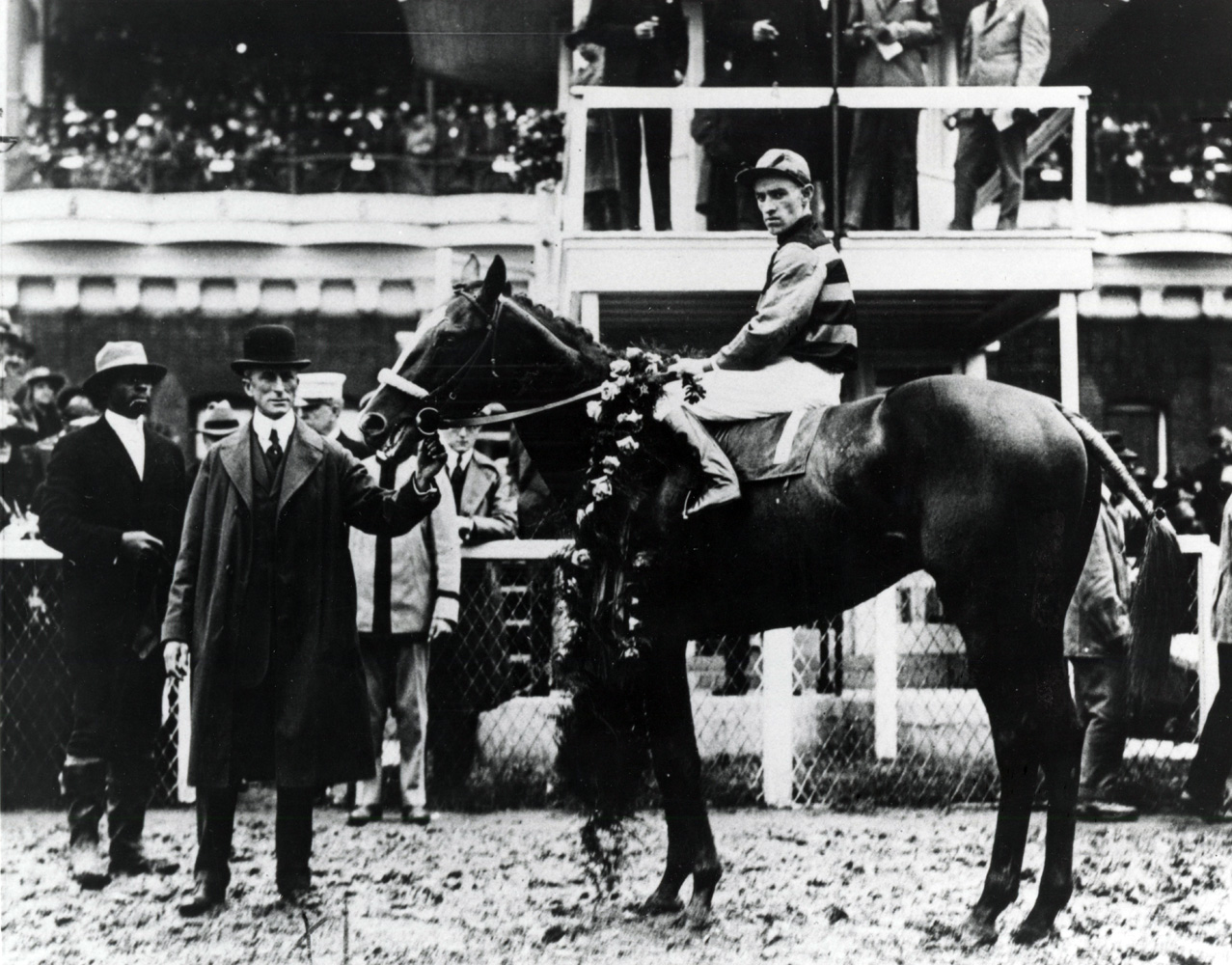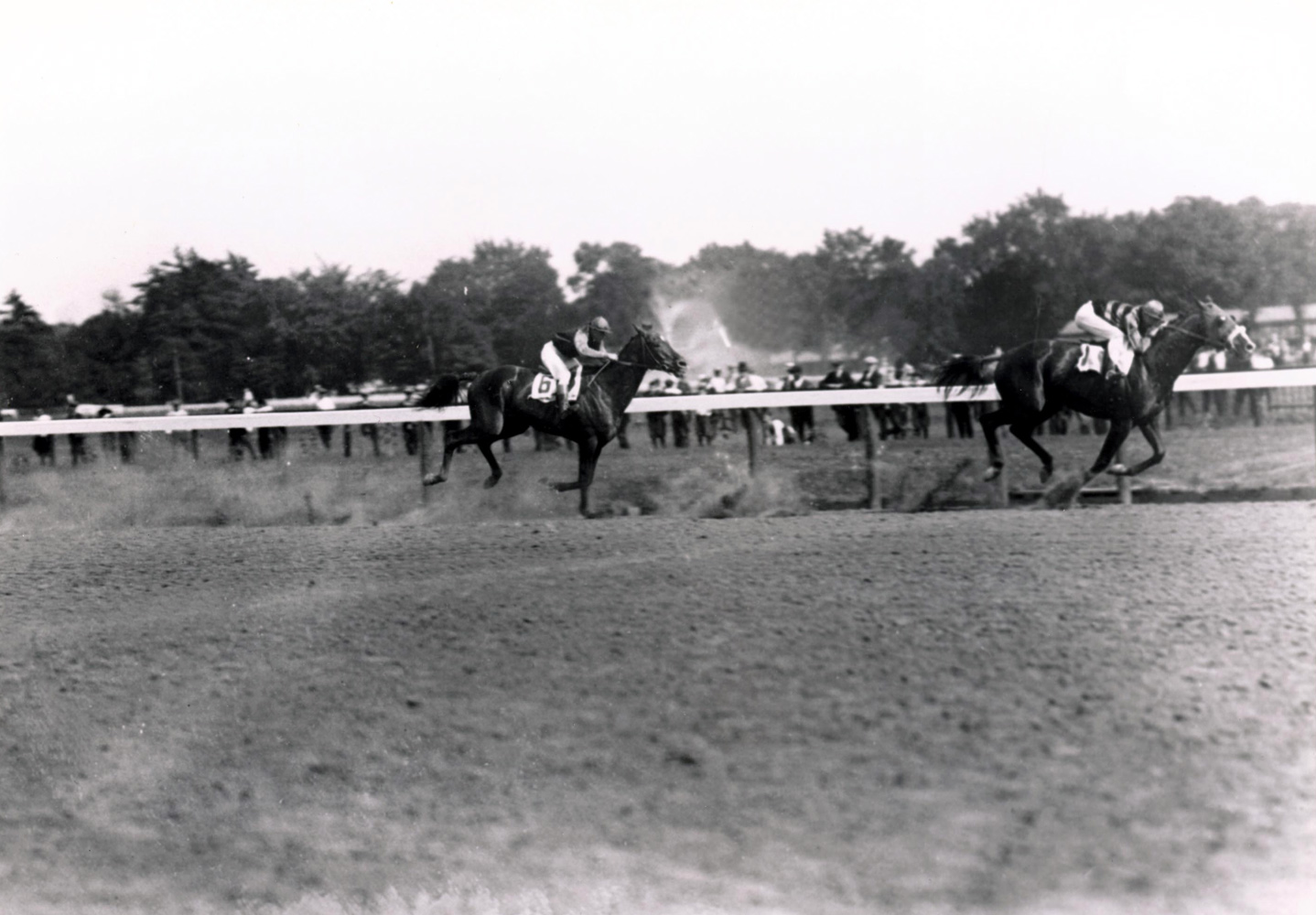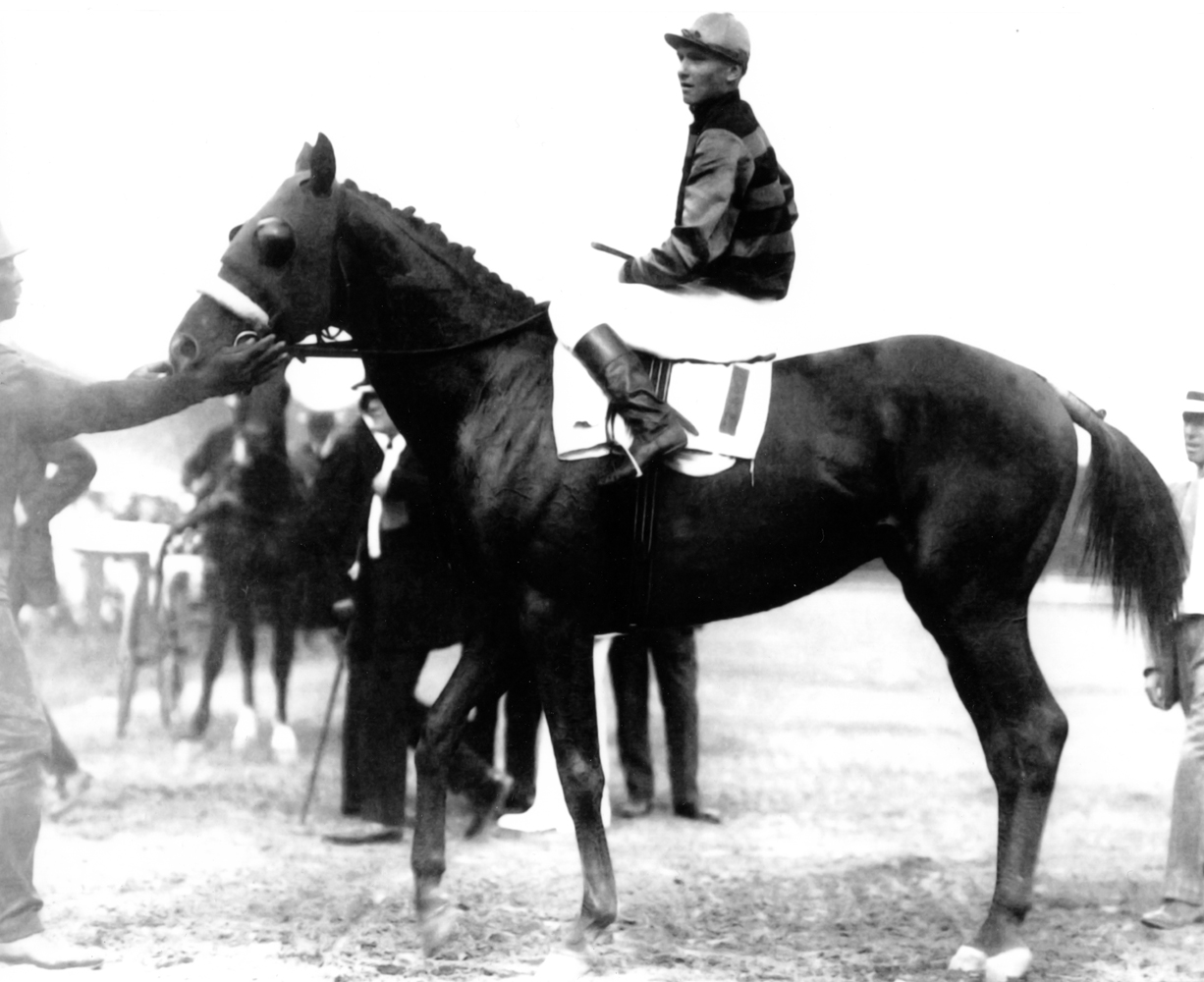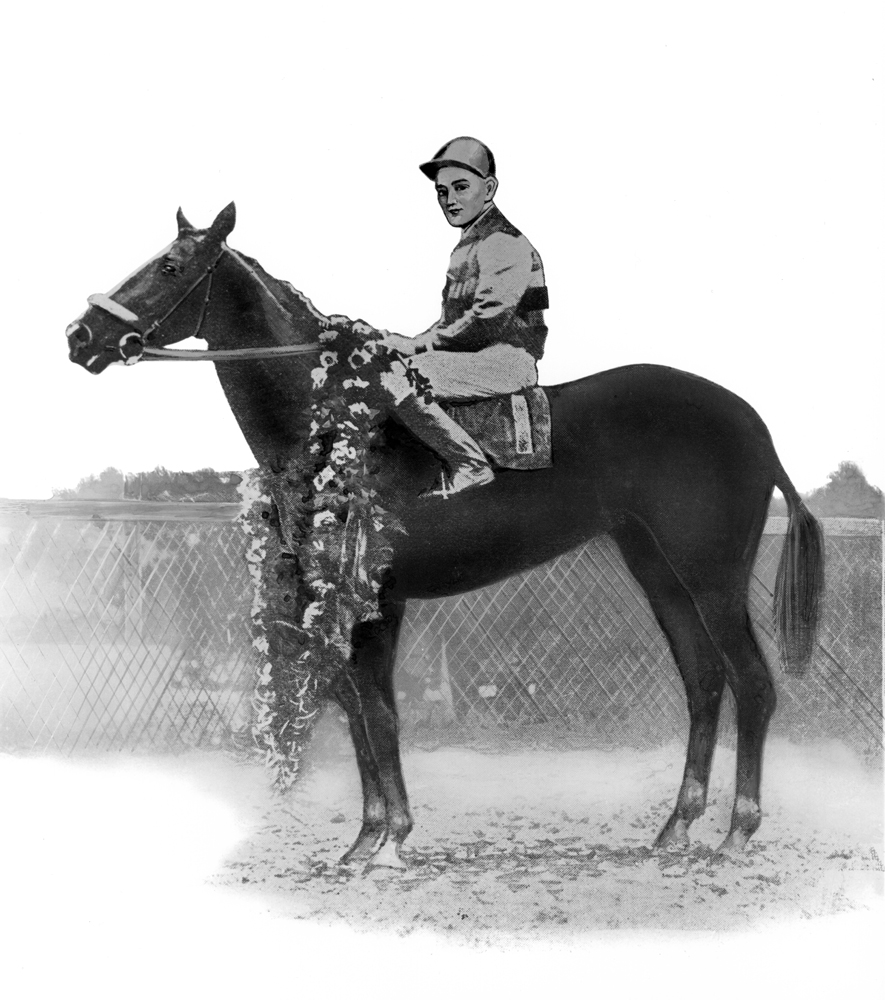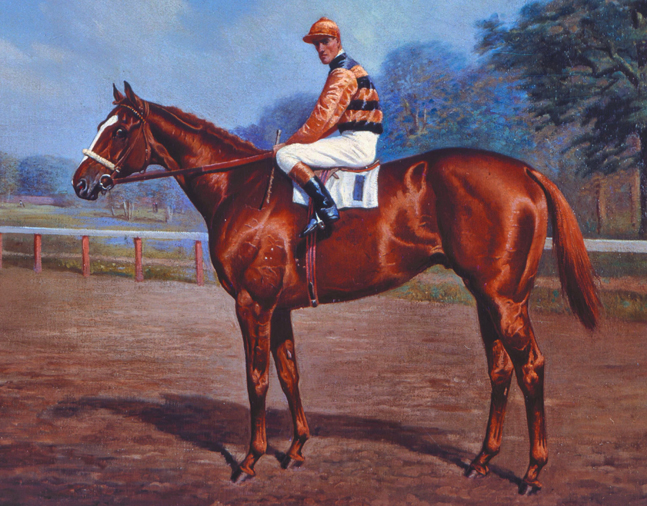Sir Barton (KY)
Although he was America’s first Triple Crown winner, little was expected of Sir Barton during the early stages of his career.
Racing Record
31
Starts
| 1918 | 6 | 0 | 1 | 0 | $4113 $4,113 |
| 1919 | 13 | 8 | 3 | 2 | $88250 $88,250 |
| 1920 | 12 | 5 | 2 | 3 | $24494 $24,494 |
Biography
Although he was America’s first Triple Crown winner, little was expected of Sir Barton during the early stages of his career.
Bred by John E. Madden at Hamburg Place near Lexington, Kentucky., Sir Barton was a son of Star Shoot out of the Hanover mare Lady Sterling. Madden, who bred five Kentucky Derby winners and was America’s leading breeder for 11 consecutive years in races won, had a nominal partner in breeding Sir Barton, Vivian Gooch, whose name was also affixed to the record. Gooch trained in England for Louis Winans, who had purchased Sir Barton’s half-brother, Sir Martin, from Madden for $75,000 after the colt was the leading American 2-year-old in 1908.
Sir Martin was sent to England but fell during the 1909 Epsom Derby. Years later, when visiting Madden in Kentucky,Gooch was promised half-interest in the next foal of Sir Martin’s dam, Lady Sterling. The foal was a chestnut son of Star Shoot, named Sir Barton. Madden later repurchased Gooch’s share.
Sir Barton started slowly as a 2-year-old in 1918. He finished fifth in the Tremont Stakes in his career debut and then ninth in both the Flash Stakes and United States Hotel Stakes and seventh in the Sanford Memorial. Madden then sold Sir Barton to J. K. L. Ross for $10,000.
Ross, who was building one of the premier racing stables in North America, turned Sir Barton over to Hall of Fame trainer H. Guy Bedwell. In his first try for Ross and Bedwell, Sir Barton finished 15th. In his final start as a juvemile, Sir Barton showed a bit of promise by finishing a strong second in the Futurity.
Sir Barton made his 3-year-old debut in the 1919 Kentucky Derby. The top two Derby contenders were supposed to be Eternal and Billy Kelly, a stablemate of Sir Barton. With Hall of Famer John Loftus up and in a driving rain, Sir Barton led all the way, winning by five lengths over Billy Kelly to break his maiden in the Derby.
Shipped to Baltimore for the Preakness, which was only four days after the Derby, Sir Barton defeated Eternal by four lengths. He then romped in the Belmont by five and set a new American record for the 11-furlong distance. Thus, he became the fist horse to win the three of races which would later be popularized as the Triple Crown.
After a loss in the Dwyer Stakes, Sir Barton was given time off until the fall. He finished second to Billy Kelly in an allowance upon his return then defeated Billy Kelly in the Potomac Handicap. Sir Barton added a victory in the Maryland Handicap and a pair of wins in the Pimlico Fall Serial Weight-for-Age races to finish his sophomore campaign with a record of 8-3-2 from 13 starts and earnings of $88,249.
During the first half of Sir Barton’s 4-year-old season, he resumed his previous year’s form. Following three unsuccessful efforts in four starts, Sir Barton reeled off four straight stakes wins — the Rennert, Saratoga, Dominion, and Merchants’ and Citizens’ handicaps — setting new track records in two of the handicaps and carrying top weight each time.
Sir Barton then met up with the 3-year-old wonder horse, Man o’ War, in a match race on Oct. 12, 1920, at Kenilworth Park in Windsor, Ontario, Canada. On the line was a record $75,000 purse money and a $5,000 gold cup. The anticipation of the event proved to be greater than the race. Man o’ War led throughout and was hardly pressed, defeating Sir Barton by seven lengths and shaving six seconds off the track record for 1¼ miles. Sir Barton raced three more times that year without a win before being retired to stud with a career record of 13-6-5 from 31 starts and earnings of $116,857.
Ross sold Sir Barton following his racing career and the horse stood first in Virginia and later in Kentucky. Although not a standout as a stallion, Sir Barton did sire six stakes winners, including 1928 Kentucky Oaks winner Easter Stockings. In 1933, Sir Barton was sent to the U.S. Army Remount. He was transported to Wyoming, where he died at the age of 21 in 1937.
Achievements
Horse of the Year — 1919
Champion 3-Year-Old Male — 1919
Triple Crown Highlights
Won the Kentucky Derby — 1919
Won the Preakness Stakes — 1919
Won the Belmont Stakes — 1919
Media

